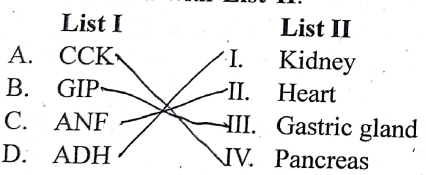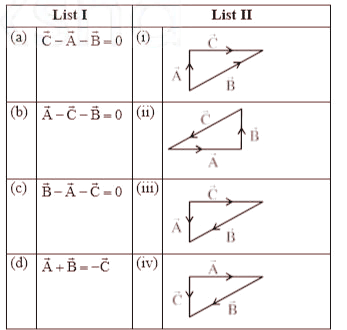Which of the following parts of our body help us in movement?
(i) Bones
(ii) Skin
(iii) Muscles
(iv) Organs
Choose the correct answer from the option below.
(i) and (iii)
(ii) and (iv)
(i) and (iv)
(iii) and (ii)
The correct Answer is:A
To answer the question "Which of the following parts of our body help us in movement?" we need to analyze each option provided:
1. Bones:
- Bones form the structural framework of our body, known as the skeleton. They provide strength and support. However, bones alone do not allow for movement; they need to be connected to muscles. The joints between bones allow for movement when muscles contract and relax. Therefore, bones do play a role in movement, but they work in conjunction with muscles.
2. Skin:
- The skin is the outermost protective layer of our body. Its main function is to protect the body from germs and foreign particles. Skin does not aid in movement, so it is not a correct answer.
3. Muscles:
- Muscles are crucial for movement. They wrap around the bones and can contract and relax, enabling movement. For example, in humans, muscles work with bones to allow us to move our limbs. In other organisms, like earthworms, muscles also facilitate movement without bones. Thus, muscles are essential for movement.
4. Organs:
- Organs are internal structures such as the liver and kidneys. They perform various functions necessary for survival but do not contribute to movement. Therefore, organs do not help in movement.
Based on this analysis, the parts of the body that help us in movement are:
- Bones (i)
- Muscles (iii)
Thus, the correct answer is (i) Bones and (iii) Muscles.
- Bones form the structural framework of our body, known as the skeleton. They provide strength and support. However, bones alone do not allow for movement; they need to be connected to muscles. The joints between bones allow for movement when muscles contract and relax. Therefore, bones do play a role in movement, but they work in conjunction with muscles.
- The skin is the outermost protective layer of our body. Its main function is to protect the body from germs and foreign particles. Skin does not aid in movement, so it is not a correct answer.
- Muscles are crucial for movement. They wrap around the bones and can contract and relax, enabling movement. For example, in humans, muscles work with bones to allow us to move our limbs. In other organisms, like earthworms, muscles also facilitate movement without bones. Thus, muscles are essential for movement.
- Organs are internal structures such as the liver and kidneys. They perform various functions necessary for survival but do not contribute to movement. Therefore, organs do not help in movement.
- Muscles (iii)
Topper's Solved these Questions
- BODY MOVEMENT BOOK - NCERT EXEMPLARCHAPTER - BODY MOVEMENT EXERCISE - VERY SHORT ANSWER QUESTIONS
14 Videos
- BODY MOVEMENT BOOK - NCERT EXEMPLARCHAPTER - BODY MOVEMENT EXERCISE - SHORT ANSWER QUESTIONS
12 Videos
- CHANGES AROUND US BOOK - NCERT EXEMPLARCHAPTER - CHANGES AROUND US EXERCISE - LONG ANSWER QUESTIONS
10 Videos
Similar Questions
Knowledge Check
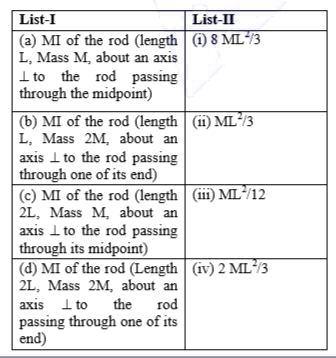
Choose the correct answer from the options given below :A(a)–(ii),(b)–(iii),(c)–(i),(d)–(iv)B(a)–(ii),(b)–(i),(c)–(iii),(d)–(iv)C(a)–(iii),(b)–(iv),(c)–(ii),(d)–(i)D(a)–(iii),(b)–(iv),(c)–(i),(d)–(ii)Match List I with List II.
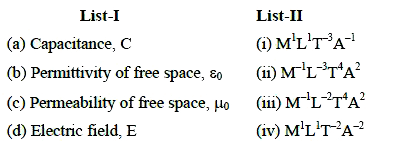
Choose the correct answer from the options given belowA(a) → (iii), (b) → (ii), (c ) → (iv), (d) → (i)B(a) → (iii), (b) → (iv), (c ) → (ii), (d) → (i)C(a) → (iv), (b) → (ii), (c ) → (iii), (d) → (i)D(a) → (iv), (b) → (iii), (c ) → (ii), (d) → (i)Match List -I with List -II:
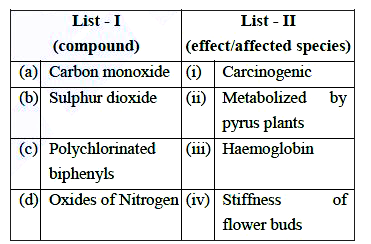 Choose the correct answer from the option given below :A(a)−(iii),(b)−(iv),(c)−(i),(d)−(ii)B(a)−(iv),(b)−(i),(c)−(iii),(d)−(ii)C(a)−(i),(b)−(ii),(c)−(iii),(d)−(iv)D(a)−(iii),(b)−(iv),(c)−(ii),(d)−(i)
Choose the correct answer from the option given below :A(a)−(iii),(b)−(iv),(c)−(i),(d)−(ii)B(a)−(iv),(b)−(i),(c)−(iii),(d)−(ii)C(a)−(i),(b)−(ii),(c)−(iii),(d)−(iv)D(a)−(iii),(b)−(iv),(c)−(ii),(d)−(i)
Match List I with List II.
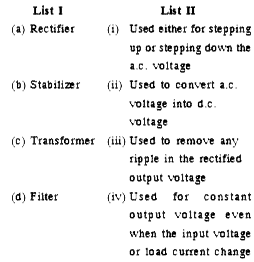
Choose the correct answer from the options given below :
View SolutionMatch List -I with List -II. Choose the correct answer from the options given below.
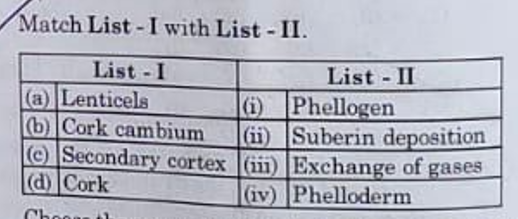
View SolutionMatch List-I with List-II

Choose the correct answer from the options given below :
View SolutionMatch List-I with List-II
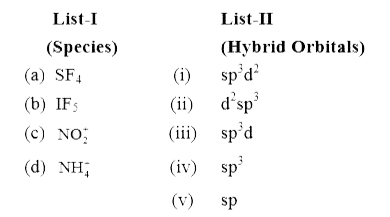
Choose the correct answer from the options given below:
View SolutionMatch List I with List II :
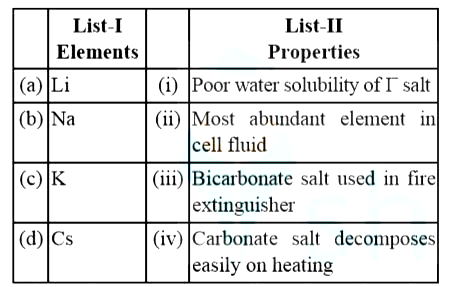
Choose the correct answer from the options given below :
View Solution

